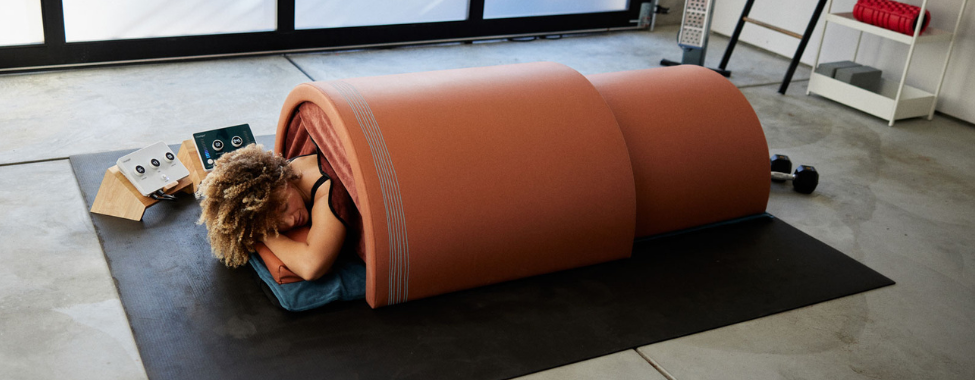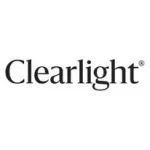- 24 Jan, 2025
- /
- Clearlight Infrared Saunas
- /
- No Comments
2025 Health Trends: From Longevity Contrast Therapy
Health and wellness trends may come and go. Still, longevity, optimal health, and enhanced quality of life are widespread and commonly shared goals that typically stay the same among the most passionate health enthusiasts. Staying ahead of 2025 wellness trends keeps you aligned with evolving health practices, which may help you achieve your current health goals even sooner than planned. Here are the top 2025 health trends expected to gain more traction during the upcoming year.
Longevity
Longevity remains a dominant health trend. A recent McKinsey Health survey found that over 60% of respondents prioritize purchasing longevity-focused products, with 70% planning to invest in them in the future. Younger generations are embracing longevity beyond aesthetics, focusing on brain function and physical strength. Surveys reveal that 42% of respondents are most concerned about physical limitations, while 38% worry about memory loss.
This shift is driving innovation in supplements like coenzyme Q10 (CoQ10), which acts as a powerful antioxidant to protect cells from free radicals, and NAD+ boosters that promote cellular repair and energy production. Red light therapy stands out in this space for its ability to stimulate cellular repair, reduce inflammation, and promote overall vitality, while salt therapy offers rejuvenating benefits for the skin. PEMF (pulsed electromagnetic field) therapy is also becoming a key player, offering regenerative benefits at the cellular level to combat aging effects and boost overall vitality. These products are aiming to make it easier to live a healthier life that focuses on longevity. By incorporating these advanced tools and therapies, the goal of aging gracefully becomes more achievable for all.
Contrast Therapy
Travel experts are predicting that in 2025, contrast therapy will be an integral part in wellness travel. Contrast therapy, or alternating between hot and cold treatments, has surged in popularity due to its proven benefits for circulation, inflammation, and recovery. The practice often involves cold plunges followed by sessions in infrared saunas. Infrared saunas are particularly celebrated for their ability to promote detoxification, enhance metabolism, and improve skin health by stimulating blood flow and cellular repair.
When combined with red light therapy, the benefits of contrast therapy are amplified. This pairing enhances the body’s natural healing processes, reduces muscle soreness, and supports overall physical recovery. Additionally, aromatherapy can be integrated into sauna sessions to further elevate relaxation and promote mental clarity. With its wide range of applications, contrast therapy has become a cornerstone of modern wellness routines, appealing to both athletes and casual wellness enthusiasts alike.

Infrared Saunas
Saunas have evolved from mere indulgences to essential components of holistic health routines, reflecting a shift toward integrating rejuvenating experiences seamlessly into daily life to prioritize both physical and mental well-being. Among these, infrared saunas have surged in popularity, boasting a 40% increase in usage in 2024 and continuing to grow in popularity in 2025. What makes them stand out is their ability to penetrate the skin deeply, offering health benefits like detoxification, pain relief, and improved circulation.
This trend isn’t just about sweating it out; it’s about embracing a comprehensive approach to self-care. Infrared saunas are often paired with other therapies such as halotherapy, red light therapy, PEMF, chromotherapy, VRT, and aromatherapy, amplifying their holistic benefits. From prestigious spas to local wellness centers and even home setups, these energizing pods have become accessible to all. As the sauna experience continues to evolve, so does our understanding of its potential health benefits, driving further interest in sauna “biohacking” for personalized wellness optimization.
Red Light Therapy
Red light and near-infrared (NIR) therapies are gaining recognition for their transformative effects on cellular health. These therapies target mitochondria to stimulate natural healing, and applications range from skincare enhancements to mental health support, making light therapy a versatile tool for wellness. Weight loss, reduced inflammation, pain relief, and faster wound healing are some of the many health benefits associated with red and NIR light therapy, reports AIMS Biophysics. Improved sleep quality, younger-looking skin, higher energy, stress reduction, enhanced focus, and better mood are other potential benefits of this 2025 wellness trend.
As newer technologies make light therapy more accessible, it has become a cornerstone of modern health routines. From at-home devices to spa-based treatments, the ability to harness light for healing continues to expand, providing a safe and effective method for optimizing overall well-being.
Low-Impact Exercise
In recent years, the fitness landscape has significantly shifted towards low-impact exercise, moving away from the high-intensity ethos that dominated the early 21st century. This change reflects a broader understanding of health and wellness, emphasizing not just physical vigor but also mental serenity and emotional well-being. According to data from 2024, 4 in 10 consumers are incorporating low-impact exercises into their fitness routines, with preferences leaning towards gentle and traditional yoga (17% and 16%, respectively) and martial arts (10%).
Another 41% of participants highlight the calming and relaxing benefits of low-intensity exercises as their primary motivation. This emerging trend underscores a growing recognition of the importance of sustainable fitness practices that nurture the body and mind, suggesting that the once-popular maxim “no pain, no gain” is being replaced by a more nuanced, holistic approach to health.
Ozempic and GLP-1 Therapies
The increasing popularity of Ozempic and other GLP-1 therapies is evident, with a significant number of individuals incorporating these medications into their health and wellness plans. A recent survey indicates that 26% of Americans plan to include GLP-1 medications in their 2025 health goals, with Gen Z leading at 37%. While effective for weight loss and diabetes management, GLP-1 medications can have side effects. Commonly reported issues include nausea, muscle loss, low appetite, fatigue, and reflux. Additionally, some users have experienced hair loss, which may be linked to rapid weight loss and potential nutrient deficiencies.
To address these side effects, various complementary services are emerging. For instance, red light therapy (RLT) is being utilized to support skin and hair health, while personalized supplements are recommended to counteract potential nutrient deficiencies. Healthcare providers also suggest incorporating strength training and ensuring adequate protein intake to prevent muscle loss and manage fatigue.

Nervous System Regulation
The emphasis on nervous system health is gaining traction, with individuals increasingly adopting various methods to manage stress and enhance overall well-being. Techniques such as trauma healing, breathing exercises, and somatic therapy are becoming more prevalent. Additionally, devices targeting the vagus nerve, heart rate variability (HRV) monitors, and biofeedback tools are now more accessible, empowering individuals to regulate their stress responses effectively.
Heart rate variability biofeedback (HRVB) has been proposed as a method to modulate pain and stress by enhancing autonomic regulation. A systematic review highlighted the potential of HRVB in managing chronic pain conditions, though further research is needed to establish its effectiveness. Breathing exercises and cold exposure are also emerging as practical tools for nervous system regulation. Pulsed electromagnetic field (PEMF) therapy is gaining attention for its potential in nervous system regulation and stress management by modulating the body’s cellular functions, offering a promising option for individuals seeking alternative therapies.
Sleep Optimization
As research continues to underscore the critical role of sleep in both physical and mental health, the focus on optimizing sleep remains a top priority for wellness enthusiasts. According to research from Mordor Intelligence, the global sleep tech devices market is projected to grow at a compound annual growth rate of 16.8% during the forecast period, driven by the increasing prevalence of sleep disorders and technological advancements in sleep tech devices. The integration of advanced technologies and therapeutic products reflects a comprehensive approach to improving sleep quality in 2025 and beyond.
Products such as smart mattresses, wearable devices, and applications that monitor biometrics continue to gain popularity, with one sleep tracking ring being valued at over $5 billion as people get in touch with their sleep habits. Products aimed at enhancing sleep quality are also gaining popularity. Red light therapy, for instance, has been seen to help improve sleep by increasing melatonin levels and regulating circadian rhythms. A study found that 30 minutes of red light exposure each night for 14 days led to improved sleep quality and elevated melatonin levels.
Sensehacking
The concept of “sensehacking,” introduced by Oxford University Professor Charles Spence, is gaining prominence as a wellness strategy that leverages sensory experiences to enhance mental and physical health. This approach involves deliberately manipulating sensory inputs of sight, sound, smell, taste, and touch to improve well-being. Psychologist Dr. Maria-Elena Lukeides has noted an increase in sensehacking in conjunction with practices like breathwork to enhance personal wellbeing.
Techniques like meditating in a sauna combine sensory elements of heat and mindfulness to promote relaxation and stress reduction. Innovative devices are also emerging in the realm of sense-based therapies. For instance, vibrational resonance therapy (VRT) utilizes sound and vibration to promote relaxation and healing by delivering specific frequencies that resonate with the body’s natural vibrations. Additionally, aromatherapy devices utilize scents to influence mood and cognitive functions.
Evidence-Based Wellness
Consumers are increasingly discerning about their wellness products, prioritizing evidence-based solutions over the allure of ‘clean’ or ‘natural’ labels. According to McKinsey data, roughly half of US consumers prioritize clinical effectiveness when purchasing in 2024, compared to just 20% who prioritize natural ingredients. This shift underscores a growing awareness of the importance of research and expertise in achieving optimal health and well-being.
Moreover, this trend extends beyond product labels – it’s a holistic approach that emphasizes the value of evidence-based wellness practices. In 2025, consumers are not only scrutinizing the products they use but also seeking advice from qualified professionals who can offer informed guidance rooted in research and expertise. This shift marks a significant step towards a more conscientious and informed approach to health and wellness. The market is responding to this demand, with products and services now vying for attention based on their clinical credentials rather than superficial claims.
AI in Health
Artificial intelligence (AI) is revolutionizing healthcare, offering AI-powered coaches, therapists, and personal trainers to support wellness goals. The global AI in healthcare market was valued at approximately USD 19.27 billion in 2023 and is projected to grow at a compound annual growth rate (CAGR) of 38.5% from 2024 to 2030. These AI-driven solutions are reshaping healthcare by providing personalized, accessible, and efficient support for individuals striving to achieve their wellness goals.
In the fitness industry, AI-powered personal trainers are gaining traction. A survey of fitness communities revealed that 59% of discussions reflected a positive outlook on the use of AI in fitness, with many users expressing enthusiasm for AI-powered workout plans and tracking technologies. In mental health, AI-driven virtual therapists are emerging, offering support and guidance through advanced algorithms. About 65% of therapy seekers tried AI-driven mental health tools in 2023, and AI is predicted to help grow the mental health market moving forward.

Restorative Travel
In 2025, travelers are prioritizing vacations that focus on true rest and renewal. Wellness retreats combining fitness, mindfulness, and detoxification are becoming the go-to for those seeking rejuvenation. Hotels are transforming traditional business spaces into wellness hubs, incorporating features like halotherapy booths, vibrational resonance therapy, and acoustic sound treatments to elevate the guest experience.
Restorative travel emphasizes intentional breaks from routine, offering multi-day retreats for postpartum recovery, mindfulness, and holistic healing. By focusing on relaxation and self-care over packed itineraries, these vacations provide the recharge needed for sustained well-being. Aromatherapy also plays a role in enhancing these restorative experiences, offering calming and revitalizing scents to support relaxation and mental clarity. The rise of wellness tourism reflects a collective shift toward prioritizing health and mindfulness in travel.
Digital Detoxing
Being constantly plugged in and connected to cyberspace can be stressful at times, especially when you find yourself at the beck and call of nearly everyone in your contact list. An influx of text messages and app notifications can also seem overwhelming at times when you’re trying to stay focused and productive. In 2025, you can expect to see more people scheduling designated “digital detox” days into their routines so that they can devote more time to their goals, loved ones, and favorite activities. Digital detox retreats are also popping up around the world to help people destress, reconnect with nature, and strengthen in-person connections.
For a study published in Behavioral Sciences, researchers observed the effects of a two-week social media digital detox on a group of young adults. They found that it was successful at reducing symptoms of stress and smartphone addiction while improving sleep quality, relationships, perceived wellness, and overall life satisfaction. Whether it’s for an entire day or only an hour, a digital detox can help eliminate the stressors that can come with being constantly connected.
Reconnecting with Nature
While doing your digital detox in 2025, why not take a breath of fresh air? Nature’s restorative power remains a vital part of wellness in 2025. With the global hiking market expected to reach $9.1 billion by 2028, more people are exploring trails, parks, and other outdoor spaces. Activities like adult camps and fitness retreats blend nostalgia with holistic healing, offering opportunities to reconnect with the natural world and oneself.
For urban dwellers, even small doses of nature – like visits to botanical gardens or cultivating houseplants – can provide mood-boosting benefits. By prioritizing time in nature, individuals can lower stress, reduce anxiety, increase their vitamin D levels, and strengthen their immune systems, making it a crucial component of a balanced lifestyle. Studies have shown that 20-90 minute sessions in nature can help boost both mental and physical health.
Mental Health
Mental health remains a central focus in wellness trends, with advancements in technology and a reduction in stigma encouraging more individuals to seek support. However, approximately 85% of people with mental health issues do not receive treatment. To bridge this gap, various therapies are becoming accessible, offering solutions for those without access to traditional therapy. For instance, AI therapy chatbots have delivered a 64% greater reduction in depression symptoms in controlled studies. Furthermore, group activities that foster social connections are becoming popular to incorporate mindfulness and community bonding, which are beneficial for mental health.
Additionally, holistic approaches like infrared sauna therapy are gaining recognition for their mental health benefits. Regular use of infrared saunas has been shown to reduce stress and anxiety, improve mood, and promote relaxation by increasing serotonin levels and lowering cortisol. A study from UCSF found that participants who combined infrared sauna sessions with cognitive behavioral therapy experienced reductions in depression symptoms, with 11 of 12 participants who completed treatment no longer meeting criteria for major depressive disorder after the treatment.
Financial Wellness
While finances might seem like an odd fit for health and wellness trends, financial health is increasingly recognized as a critical component of overall well-being. Gen Z is leading the charge in prioritizing financial literacy, budgeting, and mindful spending. According to Well + Good, only 31% of Gen Z feels financially secure, but efforts to promote financial education are helping bridge the gap.
The connection between economic stability and mental health underscores the importance of financial wellness. By incorporating budgeting tools and saving strategies into self-care routines, individuals can alleviate stress and build a solid foundation for their future. This holistic approach highlights the role of financial stability in achieving a balanced and fulfilling life.

Social Self-Care
Though going solo may be a 2025 goal of its own, self-care is no longer a solitary pursuit in the health and wellness forecast. Social wellness clubs are redefining how individuals engage in relaxation and recovery. These spaces offer communal activities such as cold plunges, infrared sauna sessions, and hyperbaric oxygen therapy, fostering connection and enhancing mental well-being. With the emergence of social wellness clubs in the US, there is a growing opportunity to embrace communal self-care practices, just like the communal sauna culture in Finland, hammam culture in Turkey, and temazcal culture in Mexico.
Yelp reports highlight the growing popularity of community-based wellness, with searches for local run clubs increasing by 82% and padel clubs by 94%. This trend extends to social gatherings like trivia nights and modern lawn clubs. By integrating wellness into communal experiences, individuals can nurture both their social and physical health, making self-care a shared and enjoyable journey.
Preventative Medicine
Preventive medicine is increasingly recognized as a cornerstone of modern healthcare, emphasizing proactive measures to maintain health and prevent disease. This approach aligns with the broader trend of investing in long-term health, aiming to reduce the risk of diseases, disabilities, and early death. By embracing preventive strategies, individuals can take charge of their health, leading to improved outcomes and a higher quality of life.
Functional medicine, with its integrative approach, is driving the mainstream adoption of preventive care. By focusing on personalized wellness plans, nutrition counseling, and advanced diagnostics, individuals can address potential health concerns before they escalate. A study by the Cleveland Clinic found that patients receiving functional medicine-based care reported significant improvements in health-related quality of life compared to those in traditional primary care settings.
Wearable Tech
Wearable technology continues to revolutionize personal health monitoring. With the global fitness tracker market projected to grow by 17.4% by 2033, devices are incorporating advanced features like hydration tracking, cortisol level assessments, and vagus nerve stimulation. These innovations empower users to align their mental and physical health by providing real-time insights. Unlike traditional lab tests, which provide only a snapshot in time, wearables offer continuous data collection, allowing users to see real-time trends and patterns in their health.
This deeper level of insight is fueling an increasing awareness of health data, and many users welcome it. By bridging the gap between cutting-edge technology and everyday health practices, wearables are enabling individuals to take a proactive approach to their well-being. The continued evolution of wearable tech promises even greater integration of personalized health data into daily routines. This gives wearers a better understanding of their bodies and more control over their wellness decisions and shifts how people interact with their own health, turning wellness into a dynamic, data-driven experience.
At-Home Health
The landscape of healthcare is shifting profoundly toward home-based solutions, fueled by consumer demand for convenience and autonomy. At-home health diagnostic kits have become increasingly popular, allowing individuals to assess their health from the comfort of their own spaces. According to research from McKinsey, with 26% of US consumers eager to test for vitamin and mineral deficiencies, 24% interested in diagnosing cold and flu symptoms, and 23% seeking to monitor cholesterol levels at home, the appeal of these kits lies in their quick results and the ability to test frequently.
Affordable and accessible at-home health testing is revolutionizing how individuals monitor their health. From DNA tests to hormone panels, these tools empower users to gain insights into their bodies without needing extensive clinical visits. As the technology becomes more advanced, at-home health testing is expected to play a pivotal role in personalized health management. This trend reflects a broader desire for personalized health management, empowering individuals to take proactive steps toward their well-being. Concurrently, there’s a growing trend of creating wellness sanctuaries within homes, with curated spaces conducive to daily health and wellness routines.
Embracing 2025 Health Trends
From the rejuvenating effects of infrared saunas to the community-driven approach of social self-care, 2025’s health trends emphasize balance, personalization, and innovation. As these practices continue to evolve, integrating them into your routine can help you stay aligned with your wellness goals. Whether you’re exploring contrast therapy, restorative travel, or the latest in wearable tech, there’s no better time to invest in a healthier, happier you.
These changes are not just about individual choices – they represent a cultural evolution that challenges traditional norms and embraces a future where well-being and vitality are at the forefront of our lives. As we continue to innovate and adapt, the pursuit of health in 2025 is characterized by a deeper understanding and appreciation for the interconnectivity of our physical, mental, and environmental well-being.
 Canada
Canada Australia
Australia New Zealand
New Zealand Germany
Germany UK
UK EU
EU Ireland
Ireland Malaysia
Malaysia China
China Japan
Japan



